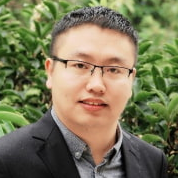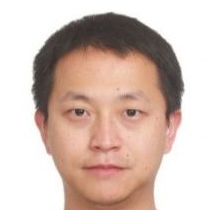Microwave Passive Components, 2nd Edition
A special issue of Micromachines (ISSN 2072-666X). This special issue belongs to the section "E:Engineering and Technology".
Deadline for manuscript submissions: 31 August 2024 | Viewed by 3571
Special Issue Editors
Interests: vacuum electronic devices; millimeter-wave/THz passive devices; dielectric microwave measurement
Special Issues, Collections and Topics in MDPI journals
Interests: vacuum electronic devices; passive pulse compressor; microwave biosensor; dielectric microwave measurement
Special Issues, Collections and Topics in MDPI journals
Interests: high power microwave devices; microwave mode converters; millimeter wave sources
Special Issue Information
Dear Colleagues,
Today, micro-, millimeter and terahertz wave devices and systems have been widely used in various aspects of life, such as the 5G/6G communication, vehicle imaging radar, medical, bio-science, security, etc. As is well-known, microwave passive components play an important role in the design and application of these devices and systems. Especially with the development of advanced machining technologies, such as the micro-electro-mechanical system (MEMS), 3D printing, and micro-/nano-machining, the machining accuracy and ability of the passive components have been improved greatly. In addition, in the past two decades, novel concepts and mechanisms have been continually introduced or proposed from other fields, including the meta-material, vortex electromagnetic wave, and spoof surface plasmon. This has made the microwave passive devices/components enter a new stage controlled by information coding. That means the performance of microwave passive devices still has great potential in the future, which may contribute to the miniaturization and integration of RF circuits and devices. Prof. Guo Liu has organized a Special Issue entitled “Microwave Passive Components”, which received a strong response within the field. Therefore, this Special Issue, entitled “Microwave Passive Components, 2nd Edition”, was created, devoted to continue exploring for research papers, short communications, and review articles focusing on the theory, modeling, simulation, measurement and applications of passive components, circuits, devices and systems in the microwave, millimeter-wave and terahertz-wave bands.
We look forward to receiving your contributions to this Special Issue.
Dr. Guoxiang Shu
Dr. Guo Liu
Dr. Dian Zhang
Dr. Luqi Zhang
Guest Editors
Manuscript Submission Information
Manuscripts should be submitted online at www.mdpi.com by registering and logging in to this website. Once you are registered, click here to go to the submission form. Manuscripts can be submitted until the deadline. All submissions that pass pre-check are peer-reviewed. Accepted papers will be published continuously in the journal (as soon as accepted) and will be listed together on the special issue website. Research articles, review articles as well as short communications are invited. For planned papers, a title and short abstract (about 100 words) can be sent to the Editorial Office for announcement on this website.
Submitted manuscripts should not have been published previously, nor be under consideration for publication elsewhere (except conference proceedings papers). All manuscripts are thoroughly refereed through a single-blind peer-review process. A guide for authors and other relevant information for submission of manuscripts is available on the Instructions for Authors page. Micromachines is an international peer-reviewed open access monthly journal published by MDPI.
Please visit the Instructions for Authors page before submitting a manuscript. The Article Processing Charge (APC) for publication in this open access journal is 2600 CHF (Swiss Francs). Submitted papers should be well formatted and use good English. Authors may use MDPI's English editing service prior to publication or during author revisions.
Keywords
- theory, modeling, fabrication, measurement and applications
- microwave, millimeter and terahertz wave passive component/devices applied in the communication, radar and some other systems
- passive component/devices in antenna, filters, biosensors, vacuum electronic devices, pulse compressor, particle accelerator, etc.
- other work related to microwave devices
Related Special Issue
- Microwave Passive Components in Micromachines (19 articles)









